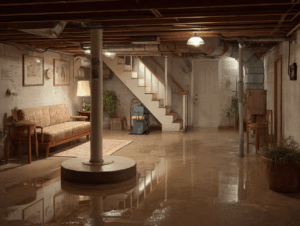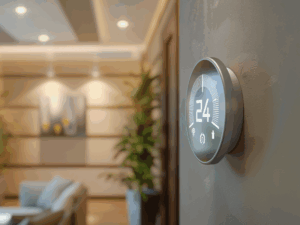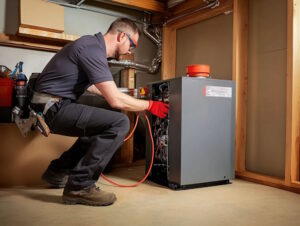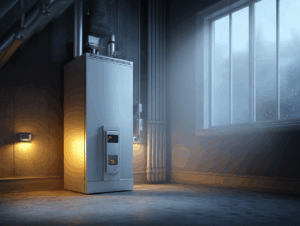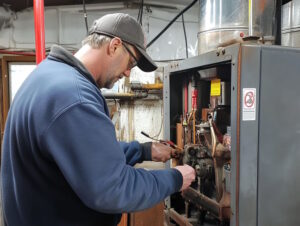[vc_row row_type=”row” use_row_as_full_screen_section=”no” type=”full_width” angled_section=”no” text_align=”left” background_image_as_pattern=”without_pattern” css_animation=””][vc_column][vc_column_text]
In May 2000, bacterial contamination of the municipal water in Walkerton, Ontario led to one of the worst public health disasters in Canadian history. Nearly 2,300 people became ill, and at least 7 people died, as a result of unclean drinking water.
Lab results identified the presence of E. coli, and DNA testing revealed that a nearby cattle farm contaminated one of the city’s municipal wells. Heavy rainwater had washed cattle manure from the farm, and carried it close enough to one of the wells, that it permeated the water source.
Walkerton was almost entirely dependent on groundwater for its domestic water supply, so it had constructed multiple wells for municipal services in 1949. However, only one of these wells (well 5) was operational during 2000, and it was the town’s sole water source.
While this disaster could have been averted if utility operators had adhered to protocol, the troubling message about the Walkerton Tragedy is that it could happen anywhere and at any time.
“Given the right conditions of inattention, mismanagement and lack of understanding by those in charge, a hazardous outbreak could be visited upon any community,” reports the Water Quality and Health Council.
So what can you do to protect your home and keep your water clean?
Check out our Winnipeg Plumbing Service page to see if we can help with your plumbing needs.
Whole House and Point of Entry (POE) Systems
While the government has laws and regulations in place to ensure drinking water stays safe, you can install water purification systems in your home for extra protection.
Point of entry (POE) systems treat all the incoming water before it goes into the individual lines that lead to your bathroom, laundry, and kitchen. These systems include:
-
Water Softeners – Water softeners use cations and sodium chloride to reduce excess calcium and magnesium from the water.
-
Large Bed Carbon Filters – Carbon filters absorb and trap chemicals such as chlorine, sediment, and volatile organic compounds.
-
Sediment and Turbidity Systems – These systems remove fine particles of rust and sediment from the water.
-
Ultraviolet Light Sterilizers – UV sterilizers use short wavelength light to kill microorganisms. It destroys nucleic acids in organisms and disrupts their DNA. This treatment is best for killing pathogens, viruses, and molds.
-
Reverse Osmosis Systems – Reverse osmosis pushes water through a semi-permeable membrane. This enables water to pass through but not salts or other impurities.
Many of these systems are considered “pre-filters” because they filter the water before it reaches the user. However, you may also take additional steps to ensure your water stays clean.
Point of Use (POU) Systems
Point of use (POU) systems are water purification products that you can use on a more personal level. Although your POE systems can filter a majority of contaminants, these POU systems will help filter the rest.
-
Personal Water Bottles – Some reusable water bottles come with a built-in filter that you can replace on a regular basis. Many filtered water bottles push the water through pleated glass fibre, iodinated resin, and carbon to promote clean-tasting water.
-
Pour-Through Filters and Pitchers – Like personal water bottles, pour-through pitchers use a combination of granular-activated carbon and resin to bond with and trap contaminants. Keep in mind that these filters do not remove all disease-causing organisms.
-
Faucet Mount Filters – When you mount this filter to your faucet, the water flows through compressed carbon and zeolite which remove chemicals from the water. Depending on the brand and the model, faucet filters may take out larger contaminants such as chlorine and salt.
-
Countertop Filters – Because some faucet filters can be expensive, many people choose to only filter their drinking water instead of filtering the water they use to wash dishes. To do this, they opt for countertop filters which sit next to the kitchen sink and connect to an existing sink faucet. The filter dispenses the water from a specialized spout on the system. Countertop filters function in the same way as faucet mount filters: it pushes the water through a carbon block to trap contaminants.
-
Refrigerator Filters – If you have a water dispenser on your refrigerator, you may consider installing a refrigerator filter. As with other POU systems, refrigerator filters rely on carbon to trap contaminants and sediment so your water tastes clean.
For best results, you’ll want a combination of both POU and POE water purification systems. Neither system is 100% perfect, but together, they’ll ensure your drinking water is clean and safe to use.
Keep in mind that both systems will need maintenance to ensure best performance. With POU systems, especially, you’ll want to replace the filters regularly according to manufacturer instructions. POE systems won’t need as much maintenance, but you’ll still want to have a plumber check them every year.
Not Sure What You Need?
If you’re not sure which system is right for your home, ask your local plumber for advice. He or she may instruct you on common issues in your area (such as high sediment or mold) and can match you with a product to fit your needs.
[/vc_column_text][/vc_column][/vc_row]

